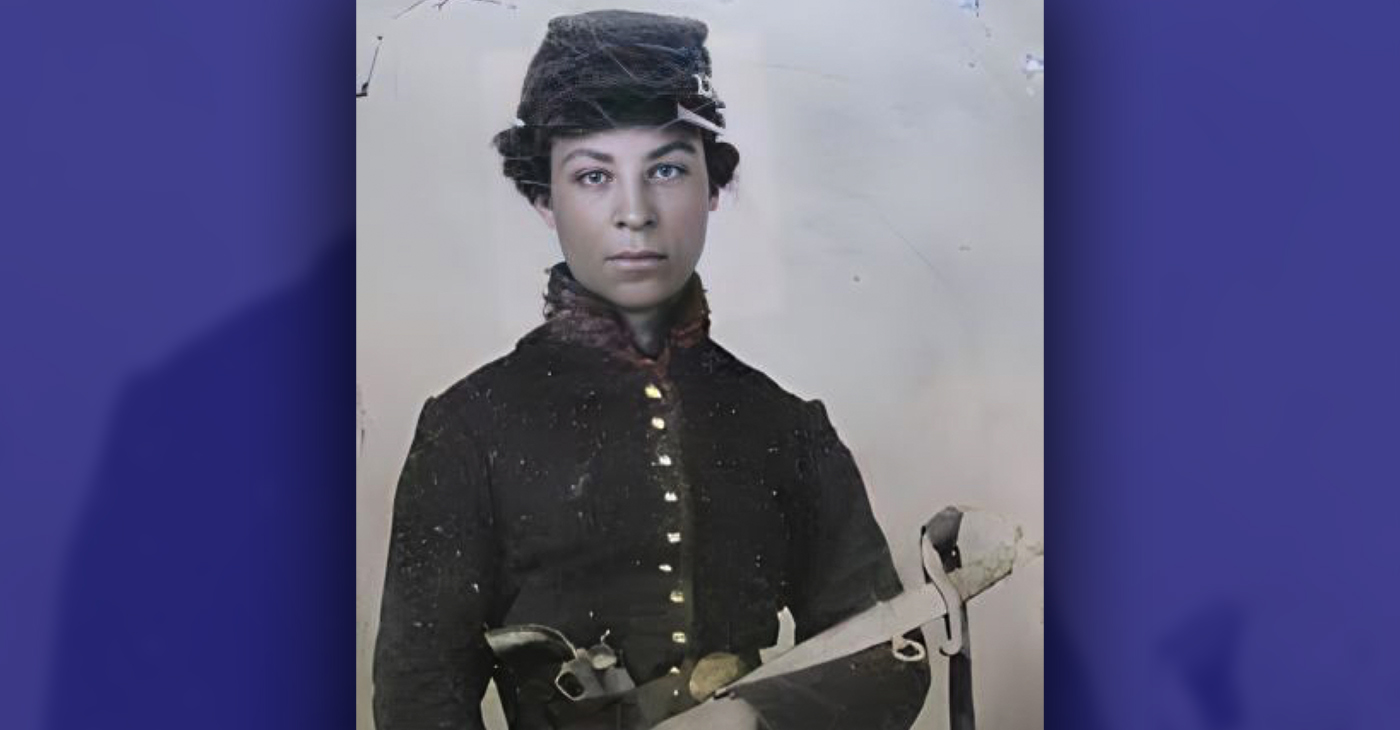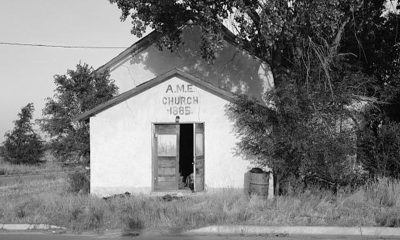Black History
Cathay Williams — The Only Known Female Buffalo Soldier
Cathay Williams knew that she couldn’t volunteer to serve as a regular soldier in the U.S. military. But knowing didn’t stop her. The young girl who had once labored as a house slave on the Johnson Plantation in Jefferson City, Missouri devised a plan to enlist in the U.S. Regular Army: she would register under the pseudonym William Cathay.

Cathay Williams knew that she couldn’t volunteer to serve as a regular soldier in the U.S. military. But knowing didn’t stop her. The young girl who had once labored as a house slave on the Johnson Plantation in Jefferson City, Missouri devised a plan to enlist in the U.S. Regular Army: she would register under the pseudonym William Cathay.
As contraband, or a captured slave, Williams served as an army cook and a washerwoman, traveling with the infantry all over the country while serving under General Philip Sheridan. This experience with the military didn’t satisfy Williams; she wanted more. Military service held the lure of independence for a young, unmarried former slave.
On Nov. 15, 1866, the 17-year-old, born to an enslaved mother and a free father in Independence, Missouri in 1844, enlisted for a three-year engagement, passing herself off as a man.
At the time, the army did not require full medical examinations. After passing the physical tests, Williams was assigned to the 38th U.S. Infantry Regiment, one of four all-Black units newly formed that year. The regiment would later be known as the Buffalo Soldiers.
This excerpt, dated Jan. 2, 1876, was pulled from an interview with the St. Louis Daily Times: “The regiment I joined wore the Zouave uniform and only two persons, a cousin and a particular friend, members of the regiment, knew that I was a woman. They never ‘blowed’ on me. They were partly the cause of my joining the army. Another reason was I wanted to make my own living and not be dependent on relations or friends.
“Soon after I joined the army, I was taken with the smallpox and was sick at a hospital across the river from St. Louis, but as soon as I got well, I joined my company in New Mexico. I was as that paper says, I was never put in the guard house, no bayonet was ever put to my back. I carried my musket and did guard and other duties while in the army, but finally I got tired and wanted to get off. I played sick, complained of pains in my side, and rheumatism in my knees.
“The post surgeon found out I was a woman and I got my discharge. The men all wanted to get rid of me after they found out I was a woman. Some of them acted real bad to me.”
Williams was discharged honorably by her commanding officer, Captain Charles E. Clarke, on Oct. 14, 1868.
After leaving the army, Williams moved to Pueblo, Colorado, where she again worked as a cook and washerwoman. She was married for a short time and bore no children. There are no official records of her death, however, it is estimated that she passed away sometime around 1893.
Activism
Oakland Post: Week of April 24 – 30, 2024
The printed Weekly Edition of the Oakland Post: Week of April 24 – 30, 2024

To enlarge your view of this issue, use the slider, magnifying glass icon or full page icon in the lower right corner of the browser window. ![]()
Activism
Oakland Post: Week of April 17 – 23, 2024
The printed Weekly Edition of the Oakland Post: Week of April 17 – 23, 2024

To enlarge your view of this issue, use the slider, magnifying glass icon or full page icon in the lower right corner of the browser window. ![]()
Black History
Matthew Henson: Explorer Extraordinaire
Matthew Henson, a trailblazing explorer who overcame countless obstacles to leave an incredible mark on history. Born on August 8, 1866, in Charles County, Maryland, his journey is a testament to the power of determination and the spirit of adventure.

By Tamara Shiloh
Matthew Henson, a trailblazing explorer who overcame countless obstacles to leave an incredible mark on history. Born on August 8, 1866, in Charles County, Maryland, his journey is a testament to the power of determination and the spirit of adventure.
Henson’s life began amidst the backdrop of post-Civil War America, where opportunities for African Americans were scarce. From a young age, he possessed an insatiable curiosity about the world beyond his small town. At the age of 12, he embarked on a journey that would change the course of his life forever when he joined a merchant ship as a cabin boy.
His most famous expedition was his journey to the Arctic with renowned explorer Robert E. Peary. In 1887, Henson joined Peary’s crew as a seaman and quickly proved himself to be invaluable with his skills as a navigator and craftsman. Over the course of several expeditions, Matthew endured extreme cold, treacherous terrain, and grueling conditions as he and Peary sought to reach the elusive North Pole.
In 1908–09, Peary set out on his eighth attempt to reach the North Pole. It was a big expedition, with Peary planning to leave supplies along the way. When he and Henson boarded their ship, the Roosevelt, leaving Greenland on August 18, 1909, they were joined by a large group. This included 22 Inuit men, 17 Inuit women, 10 children, 246 dogs, 70 tons of whale meat, blubber from 50 walruses, hunting gear, and tons of coal.
In February, Henson and Peary left their anchored ship at Ellesmere Island’s Cape Sheridan, along with the Inuit men and 130 dogs. They worked together to set up a trail and supplies along the way to the Pole.
Peary picked Henson and four Inuit people to join him in the final push to the Pole. However, before they reached their destination, Peary couldn’t walk anymore and had to ride in a dog sled. He sent Henson ahead to scout the way. In a later interview with a newspaper, Henson recalled being in the lead and realizing they had gone too far. The group turned back, and Henson noticed his footprints helped guide them to their destination. At that location, Henson planted the American flag.
Henson’s legacy extends far beyond his expeditions to the Arctic. He shattered racial barriers in the world of exploration and inspired countless individuals, regardless of race, to dream big and pursue their passions. In 1937, he was finally recognized for his achievements when he was inducted into The Explorers Club, an organization dedicated to promoting scientific exploration and field research.
Matthew Henson died in the Bronx, New York, on March 9, 1955, at the age of 88.
-

 Activism4 weeks ago
Activism4 weeks agoOakland Post: Week of March 27 – April 2, 2024
-

 #NNPA BlackPress4 weeks ago
#NNPA BlackPress4 weeks agoBeloved Actor and Activist Louis Cameron Gossett Jr. Dies at 87
-

 Community1 week ago
Community1 week agoFinancial Assistance Bill for Descendants of Enslaved Persons to Help Them Purchase, Own, or Maintain a Home
-

 Activism3 weeks ago
Activism3 weeks agoOakland Post: Week of April 3 – 6, 2024
-

 Business1 week ago
Business1 week agoV.P. Kamala Harris: Americans With Criminal Records Will Soon Be Eligible for SBA Loans
-

 Activism2 weeks ago
Activism2 weeks agoOakland Post: Week of April 10 – 16, 2024
-

 Community1 week ago
Community1 week agoAG Bonta Says Oakland School Leaders Should Comply with State Laws to Avoid ‘Disparate Harm’ When Closing or Merging Schools
-

 Community6 days ago
Community6 days agoOakland WNBA Player to be Inducted Into Hall of Fame

























































